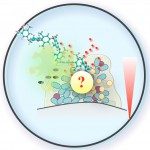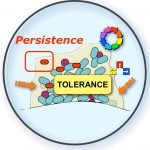Lien vers Pubmed [PMID] – 25184564
Microbiol. Mol. Biol. Rev. 2014 Sep;78(3):510-43
Surface-associated microbial communities, called biofilms, are present in all environments. Although biofilms play an important positive role in a variety of ecosystems, they also have many negative effects, including biofilm-related infections in medical settings. The ability of pathogenic biofilms to survive in the presence of high concentrations of antibiotics is called “recalcitrance” and is a characteristic property of the biofilm lifestyle, leading to treatment failure and infection recurrence. This review presents our current understanding of the molecular mechanisms of biofilm recalcitrance toward antibiotics and describes how recent progress has improved our capacity to design original and efficient strategies to prevent or eradicate biofilm-related infections.



